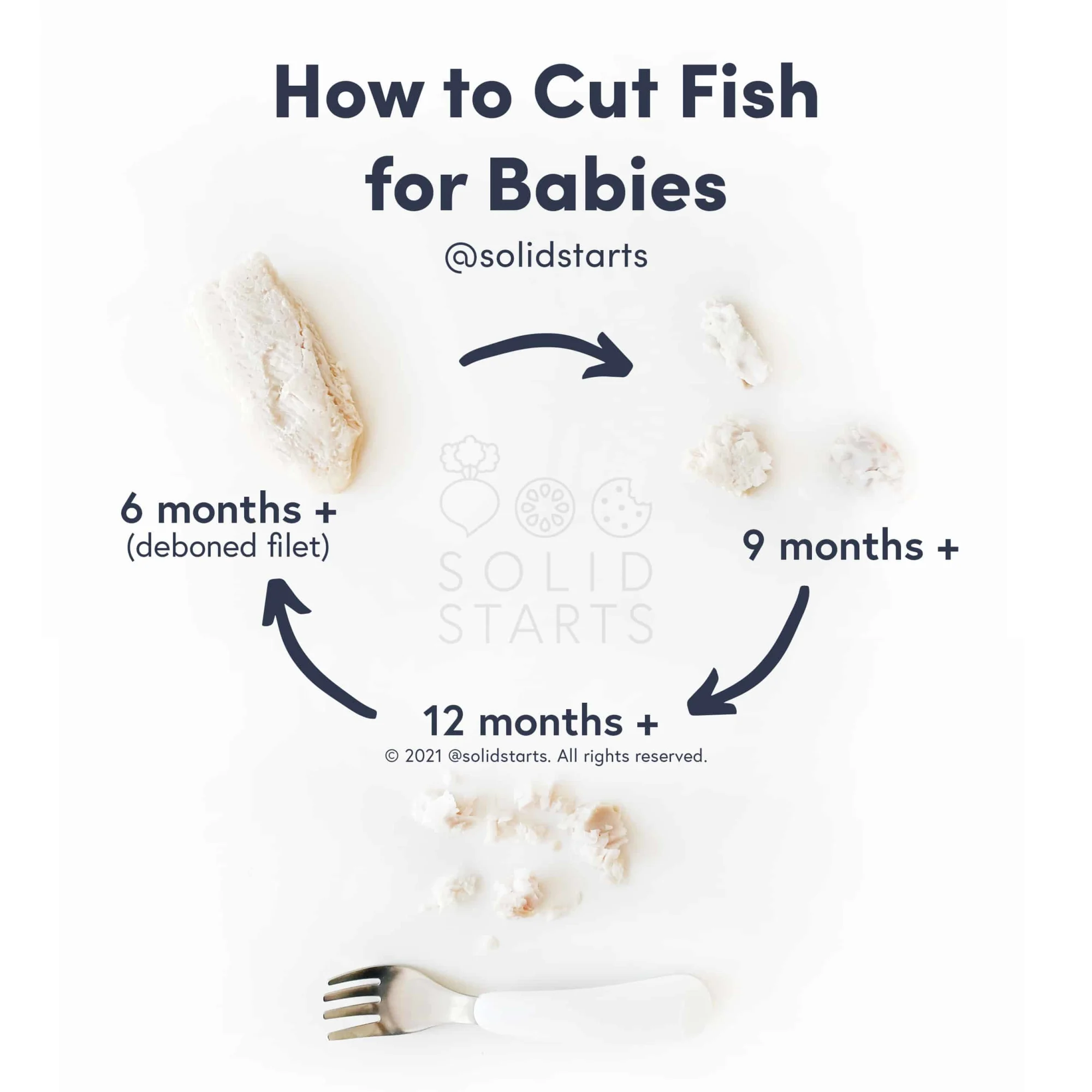Catfish
Fish (Finned)
Age Suggestion
6 months
Iron-Rich
No
Common Allergen
Yes

When can babies eat catfish?
Catfish may be introduced as soon as your baby is ready to start solids, which is generally around 6 months of age.
Background and origins of catfish
The ubiquitous catfish—named for its distinctive barbels that resemble a feline’s whiskers—thrive in freshwaters around the world, and even in some oceans, too. The fish has many nicknames (blue channel, bottom feeders, chuckleheads, mud cat, to name a few). Once cooked, catfish has a flaky consistency and mild taste, making it an easy protein alternative to meat and legumes.
In North America, the channel catfish is one of the most popular species to cook, especially among fans of the fish fry—a great party dish to feed a crowd. Channel catfish are available whole or in processed cuts (fillets, steaks, nuggets, strips, and fingers) from many different sources, from the fish farms of the American South, to the brackish waters of the Chesapeake Bay, to freshwater lakes and ponds between southern Canada and northern Mexico.
Videos
Is catfish healthy for babies?
It depends on the kind of catfish. There are hundreds of species of catfish that range in size from the tiny banjo catfish of South America to the massive Mekong catfish (up to 9 feet long). Size is important because generally, the bigger the fish and the longer it lives, the higher the content of mercury and other toxic metals.
When shopping for catfish, look for North American channel catfish (wild or farmed). Channel catfish raised in American farms will have less mercury than their wild counterparts, though farmed fish can be lower in omega-3 fatty acids due to their processed diet. North American channel catfish also have another fin up on the competition: they’re subject to American regulatory standards, while inspection and monitoring of imported catfish have been called into question.
Nutritionally, catfish offer decent amounts of protein and B vitamins, including vitamin B12, which supports brain development and blood production in a baby’s rapidly growing body. They also contain selenium and omega-3 fatty acids, though not as much as salmon, sardines, and trout.
As you do with all fish, consider where and how catfish were caught before purchasing. A widely respected go-to resource, the Monterey Bay Aquarium Seafood Watch, suggests consumers look for catfish farmed in the United States or blue catfish caught in the Chesapeake Bay. If you don’t know where the catfish is from and how it was caught or farmed, look for other seafood and say "no, thanks" to all other sources of imported farmed catfish.
Is catfish a common choking hazard for babies?
No. Catfish flesh doesn’t pose a significant risk, though fish bones certainly can cause problems. Before serving, take care to remove the skin and bones, and cut up the food into age-appropriate sizes and shapes.
For more information, visit our section on gagging and choking and familiarize yourself with common choking hazards.
Is catfish a common allergen?
Yes. Finned fish and shellfish are common food allergens. That said, it’s estimated that only 1 percent of people in the United States are allergic to finned fish. Unfortunately, most individuals who are allergic to finned fish do not outgrow the allergy.
If you have a family history of allergies or suspect your baby may be allergic to fish, make an appointment with an allergist before introducing catfish. As with all common allergens, introduce catfish in scant amounts and watch closely as your baby eats to see if any adverse reaction occurs. If all goes well, gradually increase the serving size to your baby over time.
How do you prepare catfish for babies with baby-led weaning?
Every baby develops on their own timeline, and the suggestions on how to cut or prepare particular foods are generalizations for a broad audience.
6 to 9 months old:
Serve a catfish fillet that’s easy for babies to grab with their fists, which is about the size of two adult pinky fingers placed next to one another. Alternatively, try placing a bit of catfish flakes in a bowl that suctions to the table and let your baby get messy. Remember to limit the amount served during the first couple of meals until a fish allergy is ruled out.
9 to 18 months old:
This is a great age for fish cakes! The patty shape is easy for babies to grab and hold independently and will maximize consumption.
18 to 24 months old:
Try mixing flaked catfish into an omelet or healthy grains (such as quinoa) and encourage your baby to practice using utensils with an age-appropriate fork.
When introducing a new food to babies, try serving it two ways, such as catfish cakes and freshly cooked catfish in butter. Like all humans, babies—and especially toddlers—enjoy choice. Every child is different and certain textures and shapes will appeal to some more than others.
For more information on which fish are safe for babies, see our guide to the Best and Worst Fish for Babies.
Written and reviewed by these specialists
Expert Tips Delivered to Your Inbox
Sign up for weekly tips, recipes and more!
The content offered on SolidStarts.com is for informational purposes only. Solidstarts is not engaged in rendering professional advice, whether medical or otherwise, to individual users or their children or families. No content on this site, regardless of date, should ever be used as a substitute for direct medical advice from your doctor or your medical or health professional, nutritionist, or expert in pediatric feeding and eating. By accessing the content on SolidStarts.com, you acknowledge and agree that you are accepting the responsibility for your child’s health and well-being. In return for providing you with an array of content “baby-led weaning” information, you waive any claims that you or your child may have as a result of utilizing the content on SolidStarts.com.




